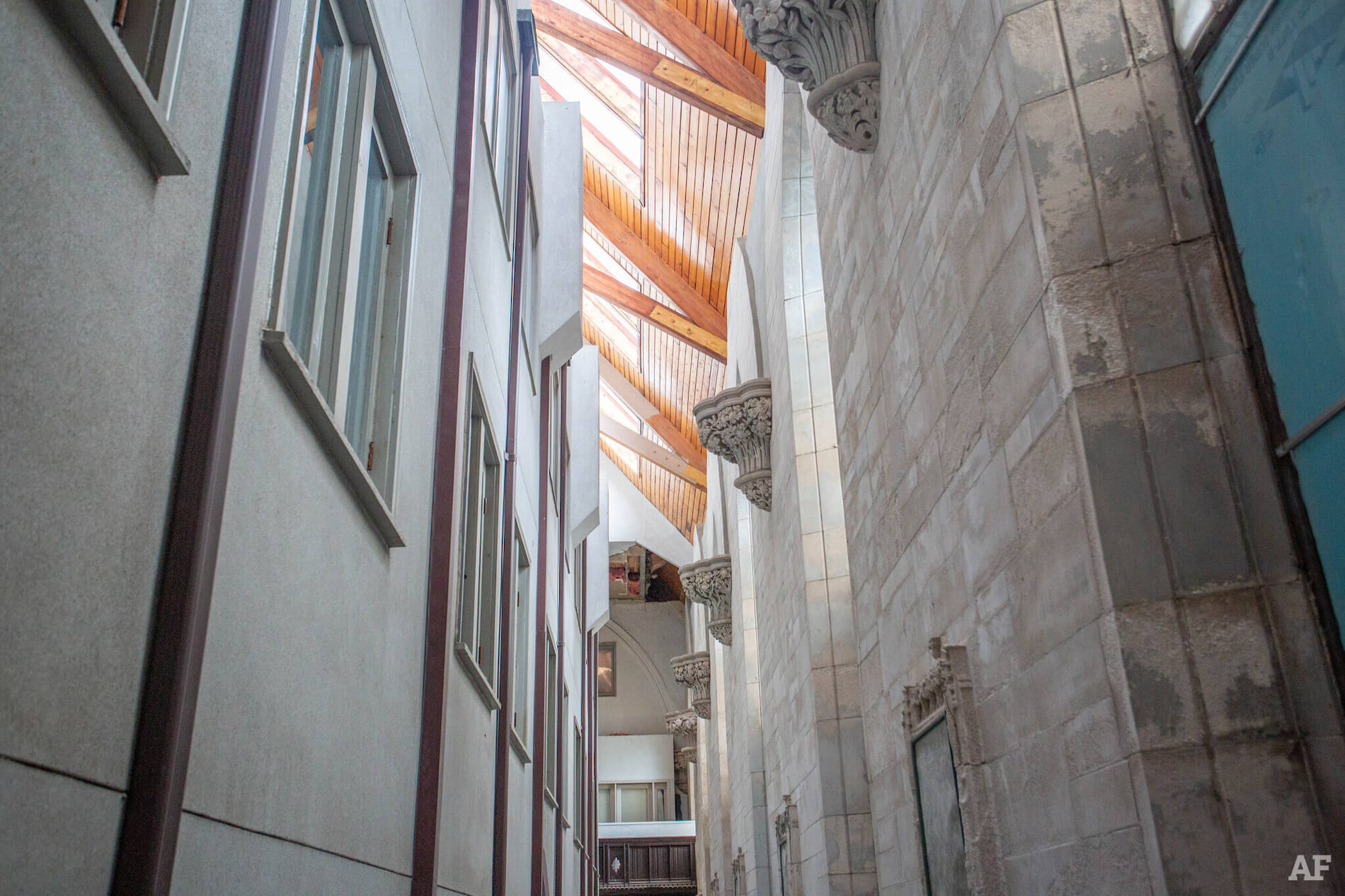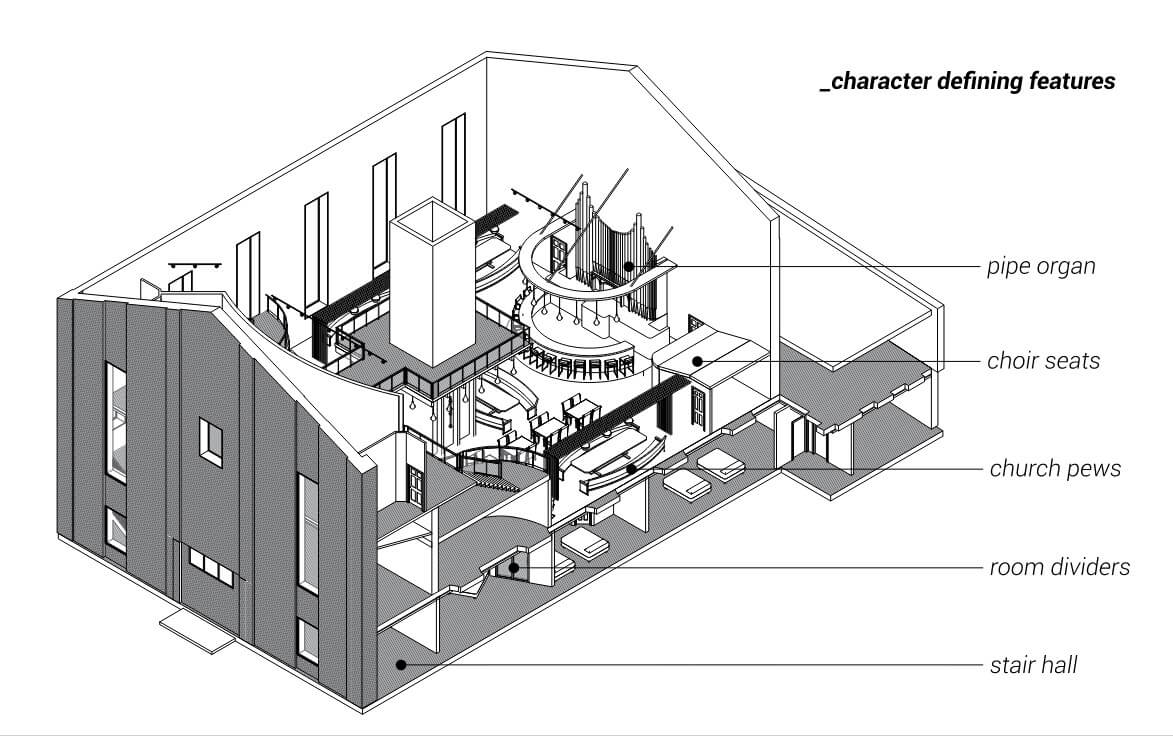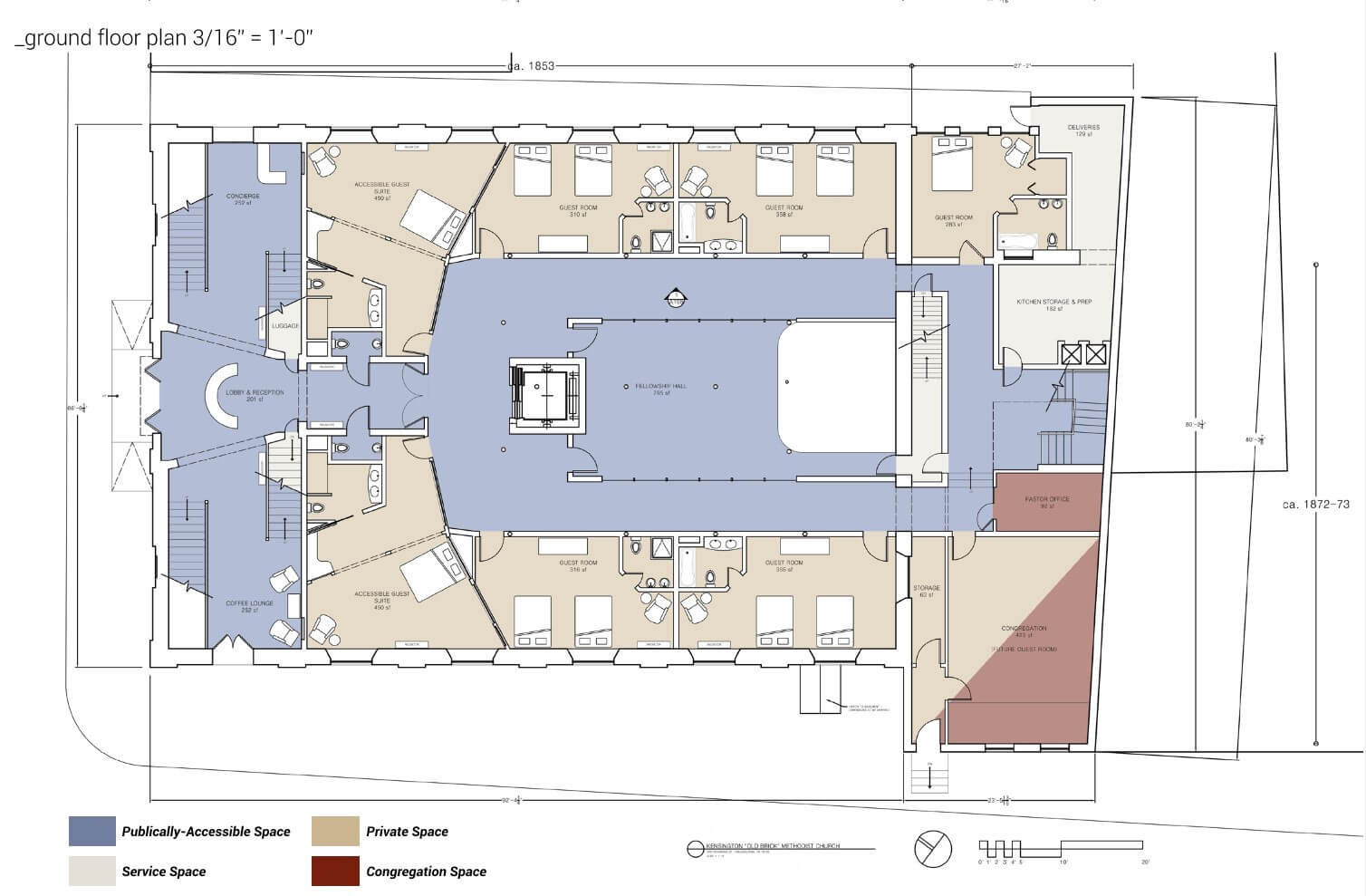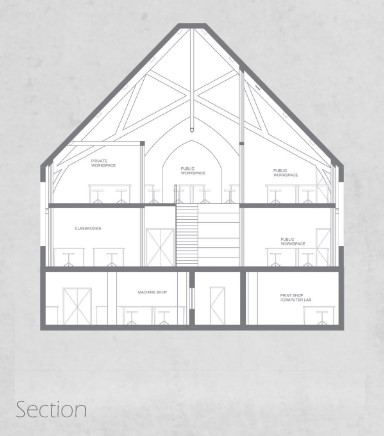Throughout the country, historic churches stand as community landmarks, reminding us of the investments of previous generations and adding a rich texture to the tapestry of our neighborhoods. In urban settings like Philadelphia, where I live and teach, their scale, form, and high-quality materials and decorations set them apart, providing a welcome visual interlude in residential neighborhoods. But dwindling congregations and high maintenance costs have put many historic religious properties at risk in recent years. When these community assets are lost, they leave a hole in the neighborhood fabric, rarely mended by the new construction that takes its place. The question now more than ever before is, How can we save these places?
As a historic preservationist, my focus increasingly has turned to answering this question through adaptive reuse, the process by which a building is converted to a use other than that for which it was designed. The trick is finding new purposes for these churches while preserving their historical character. I often task my Jefferson University architecture and historic preservation students with creating adaptive reuse solutions that are practical but mindful of building history.
The successful adaptive reuse of a historic building incorporates character-defining elements of the original building into the new design. For a factory building that might mean preserving a smokestack or the style, size, and number of window openings on a long façade, allowing the repetitive rhythm of the openings to continue to identify the building as a former place of industry. Interiors might retain exposed brick and wood floors. Historic religious properties, in addition to the physical manifestations of character, have what might be called experiential character-defining features related to the intangible sacred aspects of the building. Both physical and intangible characteristics of a historic church are often more complex and more challenging to preserve.
Another important consideration when applying the principle of adaptive reuse is finding a purpose compatible with the existing building. Because churches are designed for large gatherings and performance (sermons, choir singing), they are easily adapted as theater spaces. Indeed, many active congregations share their sanctuaries with arts groups, which creates a mostly seamless transition between uses. As churches already are seen as civic assets, the first inclination when a church becomes vacant is to propose its use as a community center or other community-serving purpose. Unfortunately, these alternatives are not always possible. Can other uses be inserted into these spaces while preserving their character?
The sanctuary and stained-glass windows, often depicting religious figures and iconography, define many churches. Sanctuary spaces are typically voluminous, with high ceilings displaying decorative trusswork, while the altar and nave areas often contain the largest windows. The challenge lies in how to retain some sense of this volume when inserting a new use into the space. One successful approach uses the altar or nave area for circulation—an open stair or an elevator, for example. This strategy was used to great effect in a former Swedenborgian church in Philadelphia converted to multitenant office space. An area adjacent to the altar was left open to the ceiling as a lobby space, with circulation provided by a sculptural spiral stairway to one side. A glazed wall separating the lobby from the office spaces further preserved the openness of the former sanctuary. Another, similar approach pushes the office spaces to each side, leaving the center space at full height. Open balconies on each side maintain the spaciousness of the original sanctuary. A more intensive use, such as residential housing, might follow this same design strategy but on a smaller scale to increase the usable space.
Housing generally requires a higher percentage of usable square footage and enclosed spaces, making preservation of any portion of the sanctuary volume more difficult. Designing the layout with the circulation core at the altar or nave end is a good strategy here, too, although the space for a stairway might be reduced. The Steeple at University City provides an interesting example that employed the “box in a box” approach. In this project, the residential units are contained in a box within the sanctuary. Skylights illuminate the space, although the windows open to the former church interior (not the exterior). This design allows for preservation of the sanctuary interior perimeter decoration and, significantly, the stained-glass windows, which can be difficult to preserve in residential spaces. The loss of floor space, however, pushed the residential construction literally through the roof, where two-and-a-half-story dormers were added.
The addition of dormers is often required to capitalize on the uppermost volume of sanctuary interiors. Such design decisions impact the historical character of the church, requiring careful attention to the form and materials used for the dormers and the shape of the new windows. While those adapting the building need not replicate existing materials, all efforts should be made to keep the new materials compatible with the historic building.
In my class we start the design process by researching the history of our site and visiting the building to identify character-defining features. The students study examples of adaptively reused churches and buildings with similar spaces (especially large-volume interiors) to understand the possibilities for their project. Which design strategies are successful and which are not? Do projects respond to established historic design standards, such as the secretary of the interior’s Standards for Rehabilitation, considered to be a guide to best practices in the field? I challenge my students to design an adaptive reuse project that might be too big for the building, pushing them to consider dormers or an addition. By far the most demanding aspect of every project, however, is the treatment of stained-glass windows. Even if their removal is proposed, designing an appropriate replacement window is no easy feat! I plan to focus future class assignments solely on this problem. Fresh solutions are needed for preserving existing windows or inserting new windows compatible with the character of the building.
Historic churches stand as familiar landmarks in our communities. The combination of vacancies and intense development pressure in many cities, particularly for housing, should give us all a renewed sense of the importance and urgency of finding appropriate ways to adaptively reuse houses of worship. I look forward to continuing to find ways to preserve these community assets alongside my students and colleagues.




